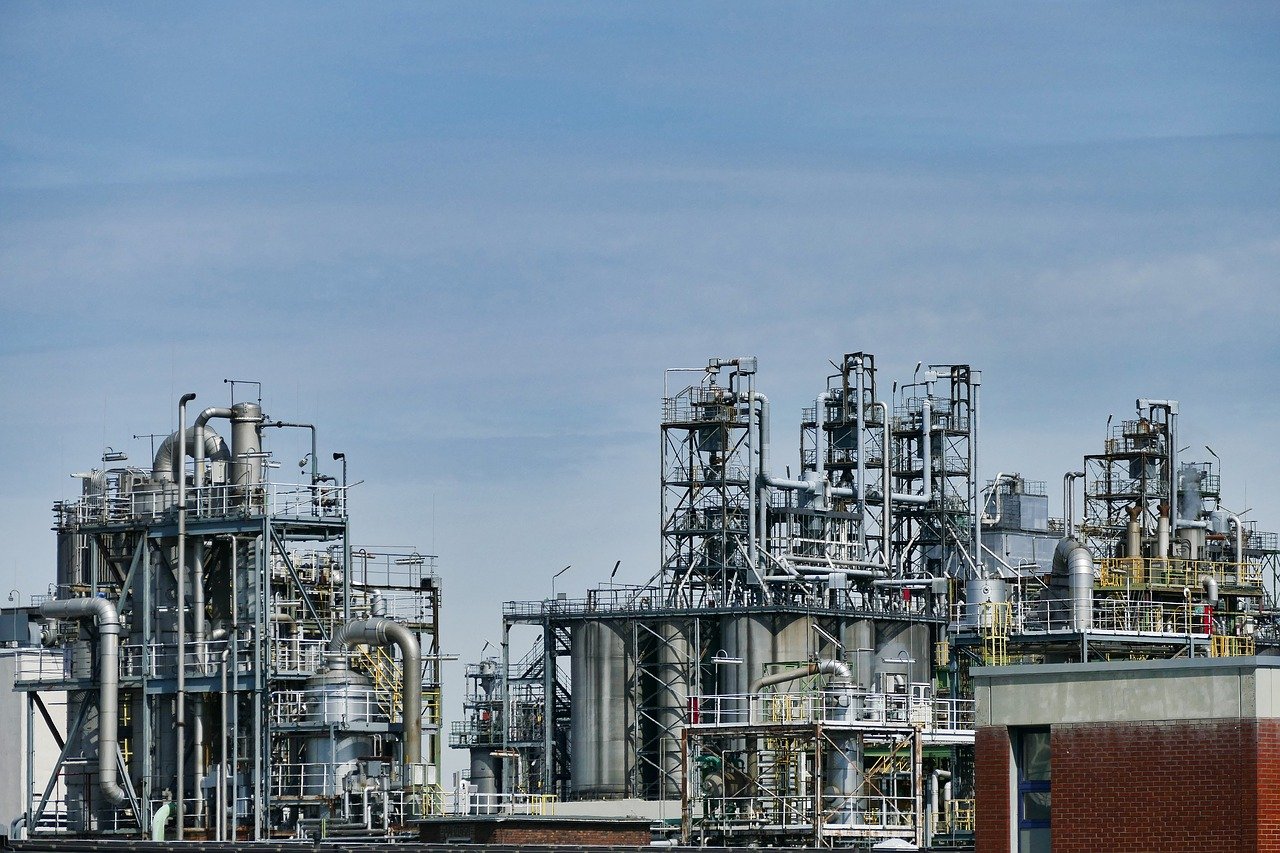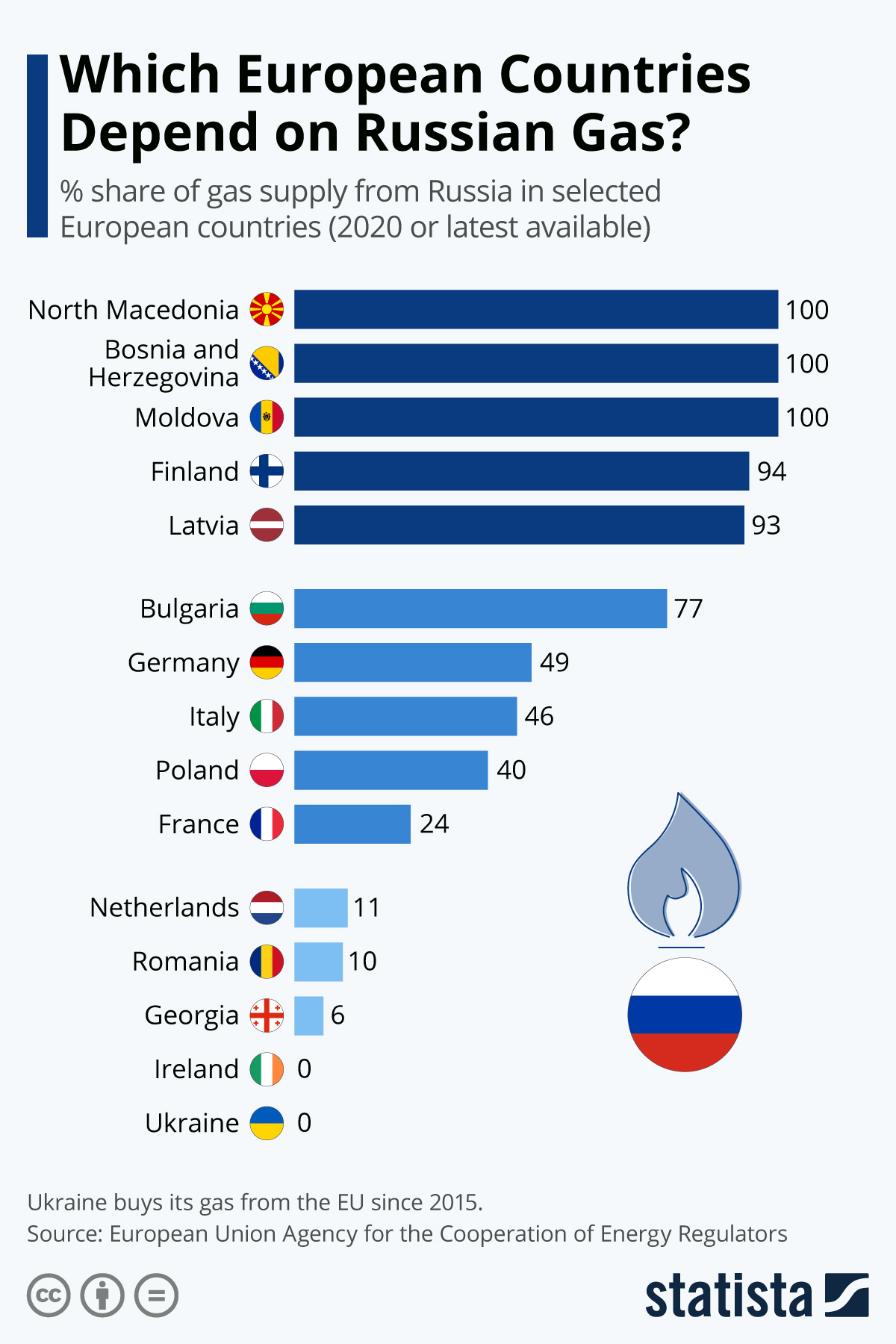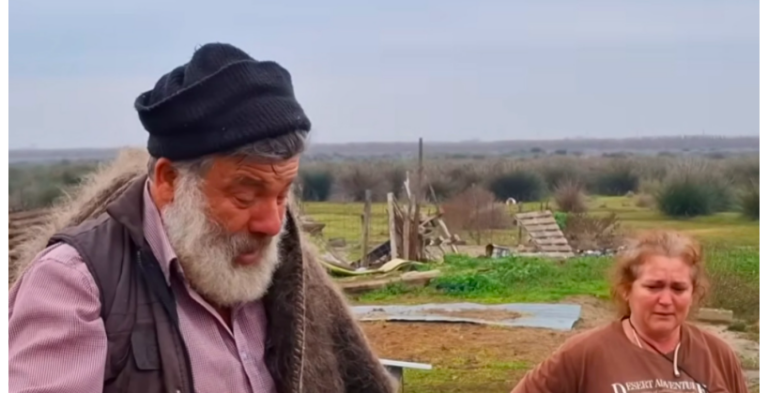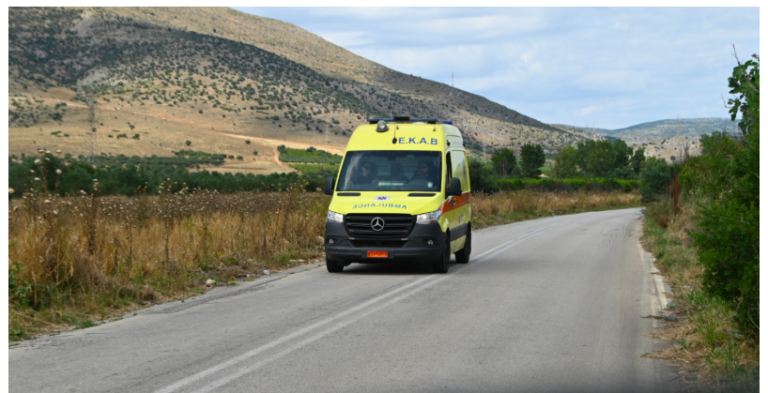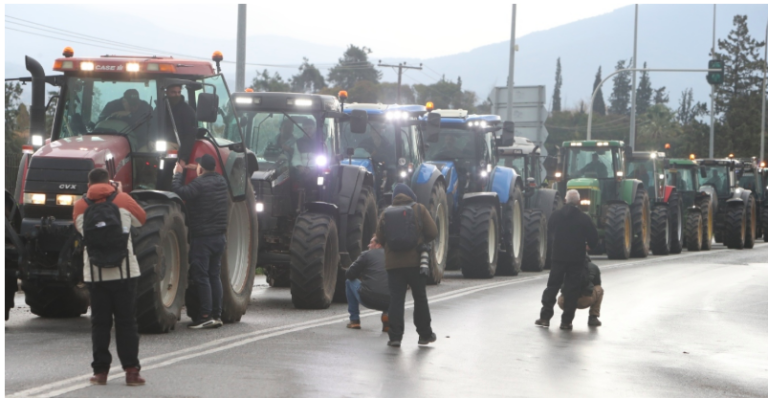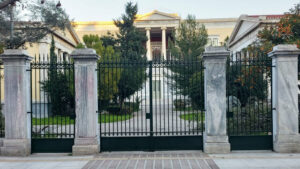After the invasion of Ukraine by Russian forces, Europe is at risk of sliding into an energy crisis triggered by much of the continent’s reliance on Russian gas, which arrives via pipelines. Liquefied natural gas that can travel long distances on cargo ships before being regasified could be a potential solution should such a crisis occur, but can be hard to source and implement. Major producers are the U.S., Qatar and Nigeria.
Data from the European Union Agency for the Cooperation of Energy Regulators shows which countries’ energy supply would be most at risk in the case of a Russian gas freeze or an embargo. Among Europe’s major economies, Germany imports around half of its gas from Russia, while France only obtains a quarter of its supply from the country, according to the latest available data. The biggest source of French gas was Norway, supplying 35 percent. Italy would also be among the most impacted at a 46 percent reliance on Russian gas.
The UK is in a different position, drawing half of its gas supply from domestic sources and importing mostly from Norway and also Qatar. Spain is also not on the list of Russia’s major customers, the biggest trade partners of the country being Algeria and the U.S.
Some smaller European countries rely exclusively on Russian gas, namely North Macedonia, Bosnia and Herzegovina and Moldova. Dependence also was above 90 percent of gas supply in Finland and Latvia and at 89 percent in Serbia, as per the latest available data. Low dependence could be seen in the Netherlands, Romania and almost no dependence on Russian gas exists in Georgia, Ireland and Ukraine. However, the latter country has been buying natural gas from the EU since 2015 after a previous armed conflict with Russia over Crimea. This means it could be subject to the re-import of Russian gas via the bloc.
You will find more infographics at Statista
Ask me anything
Explore related questions
